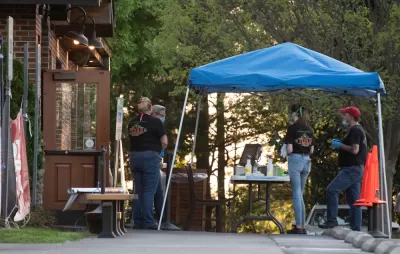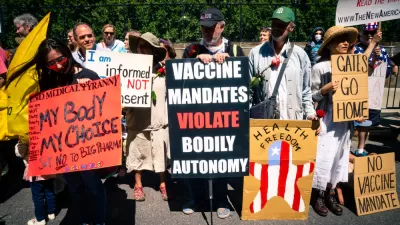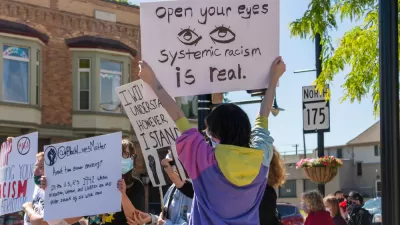The realities of social distancing are allowing for innovations and experimentations with real opportunities for long-term benefit in cities, according to an article by Allison Arieff.

Staying at home to stem the spread of the coronavirus has offered a rare experiment, according to an article by Allison Arieff: "We can see our cities for the first time without the choking traffic, dirty air and honking horns that have so often made them intolerable."
Arieff is encouraged by the adaptability of San Francisco during this time of crisis—residents have turned the city into a pedestrian's paradise, the streets are quieter, and the skies are bluer. Arieff also acknowledges that Covid-19 is also "laying bare the stark reality of income inequality," but some of the innovations and "MacGyvering" that have taken root in response to the crisis have the potential to create a new normal after the crisis has abated, according to Arieff.
One of the key ways that potential is being realized and showcased during the crisis is on streets: "Urban planners have long argued that more streets should close to make more livable spaces, but governments have always resisted, calling it impractical or impossible. They’ve just proved it can happen — and they should keep it going after the crisis."
The mere existence of this experiment in the public realm, and several other, smaller interventions, like deactivated pedestrian "beg buttons," offer some hope that cities will eventually act to prevent the worst outcomes of climate change. Time will tell whether these changes can last, according to Arieff, and for the many hopeful developments listed in this story, there are also concerning developments regarding privacy and discrimination.
FULL STORY: The Magic of Empty Streets

Americans May Be Stuck — But Why?
Americans are moving a lot less than they once did, and that is a problem. While Yoni Applebaum, in his highly-publicized article Stuck, gets the reasons badly wrong, it's still important to ask: why are we moving so much less than before?

Using Old Oil and Gas Wells for Green Energy Storage
Penn State researchers have found that repurposing abandoned oil and gas wells for geothermal-assisted compressed-air energy storage can boost efficiency, reduce environmental risks, and support clean energy and job transitions.

Placekeeping: Setting a New Precedent for City Planners
How a preservation-based approach to redevelopment and urban design can prevent displacement and honor legacy communities.

San Francisco’s Muni Ridership Grew in 2024
The system saw its highest ridership since before the Covid-19 pandemic, but faces a severe budget shortage in the coming year.

Colorado Lawmakers Move to Protect BRT Funding
In the face of potential federal funding cuts, CDOT leaders reasserted their commitment to planned bus rapid transit projects.

Safe Streets Funding in Jeopardy
The Trump administration is specifically targeting bike infrastructure and other road safety projects in its funding cuts.
Urban Design for Planners 1: Software Tools
This six-course series explores essential urban design concepts using open source software and equips planners with the tools they need to participate fully in the urban design process.
Planning for Universal Design
Learn the tools for implementing Universal Design in planning regulations.
Heyer Gruel & Associates PA
City of Moreno Valley
Institute for Housing and Urban Development Studies (IHS)
City of Grandview
Harvard GSD Executive Education
Salt Lake City
NYU Wagner Graduate School of Public Service
City of Cambridge, Maryland





























